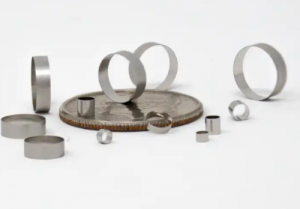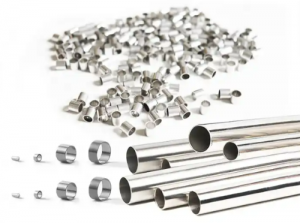Introduction
Tantalum marker bands are vital components in various medical devices. They work well, particularly in the field of interventional radiology. These bands are known for their radiopacity, and they assist medical professionals in accurate imaging during procedures.

Despite their significant role, exploring alternatives to tantalum marker bands is essential for mitigating potential limitations and advancing medical technology. Let’s have a detailed discussion in this article.
1. Tantalum Marker Bands:
Tantalum comes with its high density and excellent biocompatibility. This metal has been the cornerstone material for marker bands in medical devices. Ta bands are commonly used in catheters, guidewires, and other medical instruments.
These devices provide crucial visibility under imaging techniques like X-rays or fluoroscopy. Their radiopacity allows healthcare practitioners to precisely track the positioning of devices within the body. So, they can aid in precise navigation during surgeries or treatments.
However, there are also some challenges such as the limited availability of tantalum and its susceptibility to migration in some cases. These challenges have prompted the exploration of alternative materials for marker bands in medical applications.
Related reading: The Versatility of Tantalum Marker Bands: Applications And Benefits
2. Alternatives to Tantalum Marker Bands:
The exploration of alternative materials to Tantalum Marker Bands has become a significant focus in the industry as well. Here are some notable examples:

- Gold: Gold has been a prominent substitute for tantalum in marker bands. That’s because its high atomic number renders it radiopaque. It offers excellent visibility under imaging while maintaining stability within the body.
- Platinum-Iridium Alloys: These alloys possess high radiopacity and stability. So, they are suitable alternatives. Their resistance to corrosion and biocompatibility contribute to their utility in medical devices.
- Tungsten Alloys: Tungsten alloys have their radiopacity and robustness. They are being explored as potential substitutes. Their ability to withstand harsh conditions makes them favorable in medical settings.
- Polymeric Marker Bands: Polymer-based materials, while not inherently radiopaque, can be impregnated with radiopaque agents or loaded with metal particles to achieve visibility under imaging modalities. These polymer-based bands offer flexibility and reduced interference with imaging compared to metal bands.
Considerations in Selecting Alternatives:
In considering alternative marker materials, factors such as biocompatibility, stability, visibility, and manufacturing feasibility are pivotal.
Materials must maintain their structural integrity, exhibit minimal tissue reaction, and possess sufficient radiopacity. Therefore, they are distinguishable under imaging without compromising patient safety.
Challenges and Future Directions:
While alternative materials show promise, challenges persist in achieving the ideal balance between radiopacity, biocompatibility, and manufacturing feasibility.
- The quest for materials that offer enhanced visibility, stability, and cost-effectiveness remains ongoing.
- Additionally, advancements in manufacturing techniques, such as 3D printing, contribute to the exploration of innovative marker band designs and materials.
Conclusion
Tantalum marker bands have long been integral in medical devices, and they ensure accurate imaging and precise procedures. However, exploring alternatives is imperative to address limitations and enhance the efficiency and safety of medical interventions. Gold, platinum-iridium alloys, tungsten alloys, and polymer-based solutions are among the potential substitutes. Each of them comes with distinct advantages and challenges.
Continued research and technological advancements are crucial to identifying materials that offer superior radiopacity, biocompatibility, and manufacturability, ultimately elevating the standard of care in medical imaging and interventions.
Tantalum Marker Bands come with an array of tantalum-based shapes and forms. All of them are readily accessible at Stanford Advanced Materials (SAM). Our inventory includes Ta Foil/Ta Strip, Ta Sheet/Ta Plate, Ta Tube/Ta Pipe, Ta Capillary, Ta Wire, and Ta Bar/Ta Rod. Don’t hesitate to reach out to us for further information.